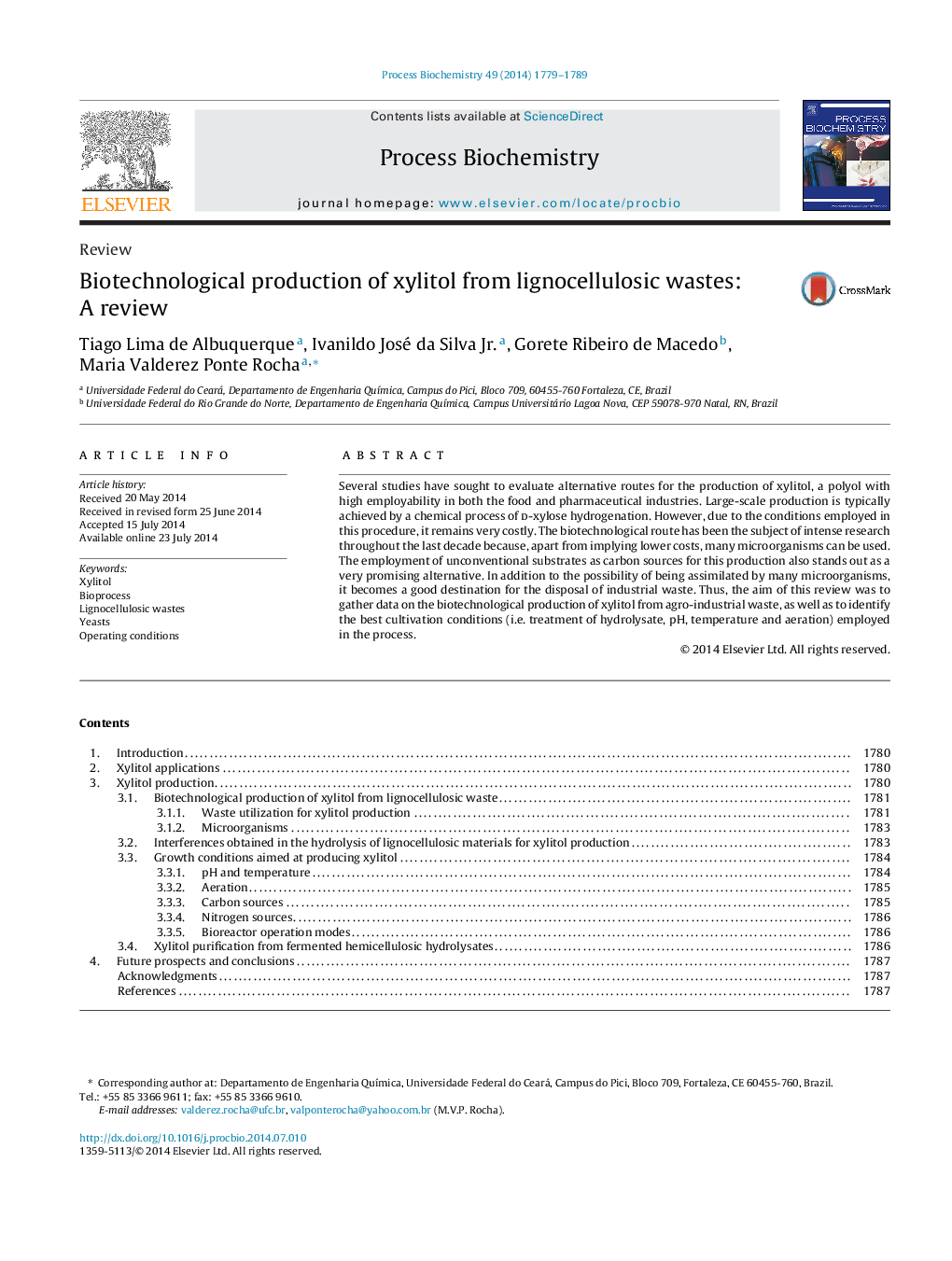| Article ID | Journal | Published Year | Pages | File Type |
|---|---|---|---|---|
| 34434 | Process Biochemistry | 2014 | 11 Pages |
•The applicability of xylitol in food production processes and the pharmaceutical industry.•Agro-industrial wastes for the biotechnological production of xylitol.•Interferences encountered in the hydrolysis from lignocellulosic materials and treatments.•Microorganisms and operational conditions used for xylitol production.•Downstream processes to obtain crystals of xylitol.
Several studies have sought to evaluate alternative routes for the production of xylitol, a polyol with high employability in both the food and pharmaceutical industries. Large-scale production is typically achieved by a chemical process of d-xylose hydrogenation. However, due to the conditions employed in this procedure, it remains very costly. The biotechnological route has been the subject of intense research throughout the last decade because, apart from implying lower costs, many microorganisms can be used. The employment of unconventional substrates as carbon sources for this production also stands out as a very promising alternative. In addition to the possibility of being assimilated by many microorganisms, it becomes a good destination for the disposal of industrial waste. Thus, the aim of this review was to gather data on the biotechnological production of xylitol from agro-industrial waste, as well as to identify the best cultivation conditions (i.e. treatment of hydrolysate, pH, temperature and aeration) employed in the process.
Graphical abstractFigure optionsDownload full-size imageDownload as PowerPoint slide
